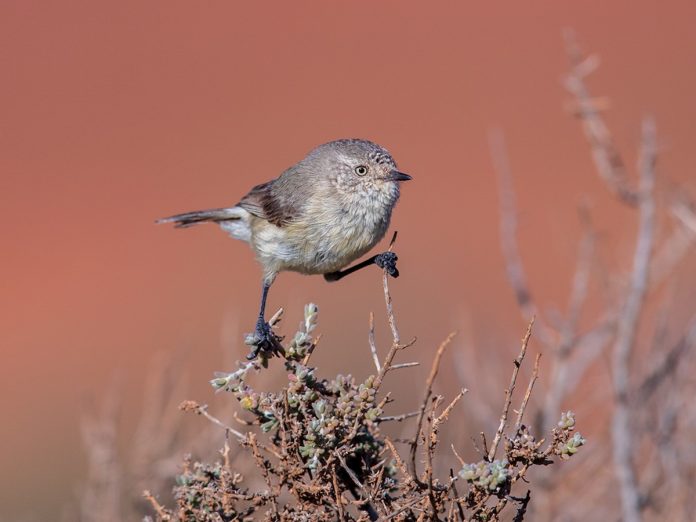Slender-billed thornbill (Acanthiza iredalei) habitats are treeless expanses of shrub fields, whether samphire and blue-bush around salt lakes or meter-high heath on sandplains. The bird is normally seen in pairs or small, loose parties of up to eight or ten individuals. But sometimes they are observed alone as well.

Slender-billed thornbill birds forage quickly, hop-gleaning in and among the foliage and twigs of one shrub before flitting in low, bouncing undulations onto the next. In this way, they cover many countries quickly, but, keeping to shrubs, they rarely come to the ground.
Throughout, they twitter constantly to one another to stay in touch. Leaf insects and spiders are their prey. To what extent local groups are nomadic or sedentary is not clear. Those on salt lakes inland may wander according to season The slender-billed thornbill rarely comes to the ground; it forages for insects and spiders in the samphire and blue-bush shrub fields of the inland.
The drought, but those in samphire around the South Australian gulfs and in the sand-plain heaths straddling the Victorian-South Australian borders are present locally all year round. There, they break up into breeding pairs from August to October and forage in groups of 4 to 10 from November into winter. It is also known as Slender Thornhill, Dark Thornhill, and Samphire Thornhill.
The size of the slender-billed thornbill is about 90–100 mm in length. Though both sexes are similar,. The adult upperparts are light olive-gray to dark brown-olive; the rump and base of the tail are broad buff-yellow to narrow yellow-olive. The wings and tail are darker gray-brown, with a black subterminal band and a gray-white tip on all but the central pair of tail feathers.
Also, the forehead and cheeks were scalloped and flecked with pale to deep cream. Underparts are uniformly cream-white to deep cream-buff washed and flecked olive-grey, more so on flanks. The eyes are cream-white, along with a dusky black bill, and the feet are black.
Some variations are in shade but not in overall pattern; birds of western salt lakes are palest, those around St. Vincents Gulf, SA, darkest, as immature adults. Slender-billed thornbill calls are reedy, tinkling, whiteface-like twittering on the same pitch, usually from perches on tops of bushes.
The nesting and breeding season is July–November. The bird builds a rather small dome with a side entrance at the top, often of swamp grasses and bark strips, seaweed in coastal areas, and bound with cobweb; lined with vegetable down, fur, or other soft materials; placed low in foliage towards the top of a small bush, often a samphire or blue bush, within a meter of the ground. The bird lays three to four white-colored eggs, speckled with spots of red-brown, predominantly at the larger end; oblong-oval, about 1 5 x 11 mm.
The distribution of slender-billed thornbill is in samphire and chenopod shrub fields around salt lakes and on flood pans across the inland southwest and around South Australian gulfs. Also sand-plain heaths of Ninety Mile, Big and Little Deserts, SA, Vic.
There are two or three races: A. i. rosinae, A. i. iredalei, and A. i. hedleyi.
Related Reading: Yellow-throated Scrubwren







